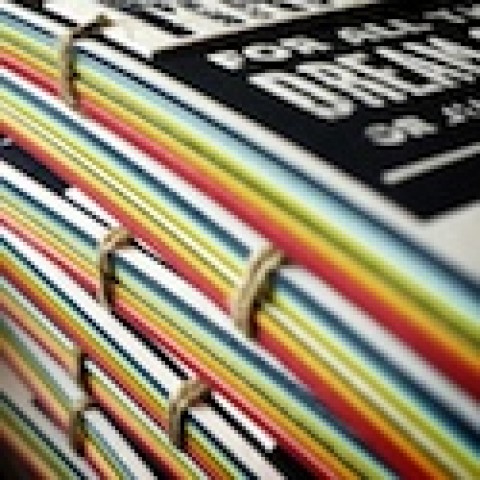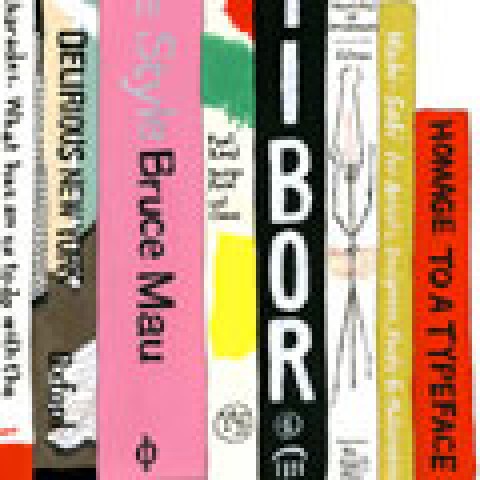
Hundreds of faces are flickering across the screen. Forensic specialist Abby Sciuto is impatiently tapping her fingers. In breathtaking speed, the computer is trying to match a face to the suspect’s photo. Bingo. The system found a match, and the killer’s name is …
Okay, so I like NCIS. I love the way the quirky agents always seem to have the latest technology – technology that works lightning fast, technology that delivers results in mere seconds.
And now it seems, real life isn’t far behind.
I had the chance to catch a glimpse into the very near future of print when I attended a Print Production Professionals webinar about intelligent print recognition (iPR), an emerging marketing technology that provides groundbreaking opportunities for print.
Anything printed can be made interactive
“Print is not dead, it is struggling to make itself heard,” said Peter Lancaster, COO and co-founder of documobi, a company on the forefront of iPR.
The documobi software allows license holders to make any printed material, from any time, on any substrate, interactive without using a marker (like the QR code squares). Yes, even in hindsight, even if it was printed years ago.
Think of it like QR codes on speed. 😉
iPR at work
Let me explain. With the proprietary software from documobi, you can take a photo of (let’s say an ad for that Juicy Burger two-for-one special) that you created. Then you attach a certain action to the ad such as going to a specific website or starting a certain video – pretty much like your average QR code.
Once you make the image active in the documobi system, any viewer can scan the ad and be taken to the predetermined destination.
This is possible because the scanning software, like a face recognition application, matches the image to one that is stored in the system, which sends you to the appropriate destination.
Users will expect print to be interactive and personal
We already know that print doesn’t live in a vacuum. Currently, more than 44 percent of Americans have smartphones, which allows them to get familiar and comfortable with QR codes. From this first step, it will get more personal.
While seeing your name written in the sand can be eye catching on a piece of direct mail, we’re all increasingly interested only in things that are relevant to us right here, right now.
A special offer for people in New York doesn’t catch my attention when I’m wandering the winding streets of San Francisco.
documobi’s iPR operates on the holy grail of marketing: reaching the customer in the right place, at the right time, and with the right message. How?
The software’s geolocation-based scanning allows the customer to make the ad even more relevant. Take the Juicy Burger ad example. That person can scan in the ad and receive the discount coupon associated with the lunch special being offered and also get a map to the eatery’s nearest location.
Test it yourself
During the webinar, Lancaster enticed attendees by having several live interactive samples.
One of them you can easily do right now:
- Download the free documobi app onto your smartphone (from your friendly app store)
- Use the app to scan the surface of a $1 bill (If it’s not a new crisp note, you might have to flatten it a bit.)
- The app takes you to … I won’t spoil the surprise in case you’re game to take iPR for a spin. 😉
The cost
Oh yes, there is that. Where your average QR code is free to create and use, documobi is a licensed software. For the advertiser, this means an annual license fee of $1,999, as well as a basic monthly fee of $50, plus 20 cents whenever anyone scans.
Maybe not an option for all of us right now, but definitely worth keeping an eye on. You never know what special plans the company will come up with in the future or whether your cutting-edge client is looking for the latest marketing advantage.
The future is interactive
There is no doubt that the future of print is interactive. I can see this technology working splendidly for:
- Magazines – you see a dress you like, scan the image and voila, you are at the retailer’s website.
- Supermarkets – you scan the image of the frozen edamame and land at a collection of delicious recipes that use the vegetable.
- Product Instructions – instead of having hundreds of furniture assembly instruction sheets, Ikea could lead you to a step-by-step video.
For now, those very special NCIS agents might still be a few technological steps ahead of us – easily tapping into the server of the Pentagon and all. But …
The future of print is intelligent. The future of print is interactive. The question is: are you ready?
Note: If you’re interested in viewing the full webinar, a replay is available at the Print Media Centr. (If you look to the right of the video, you’ll also notice a discount for $300 off a documobi license.)
documobi also has a new LinkedIn group you can join to get in on the conversation and stay updated.
——————–
Seeing designers worldwide struggle to stay current with new papers and paper trends inspired Sabine Lenz to create PaperSpecs, an independent and comprehensive Web-based paper selection tool and weekly e-newsletter. Growing up in Germany, she started her design career in Frankfurt, before moving on to Australia and the United States. Lenz worked on design projects ranging from corporate identities to major road shows and product launches. From start-ups to Fortune 500 companies, her list of clients included Oracle, Sun Microsystems, Deutsche Bank, IBM and KPMG. Lenz is a noted speaker and author on paper issues and educational topics related to the paper industry.
Copyright 2012 PaperSpecs.com












